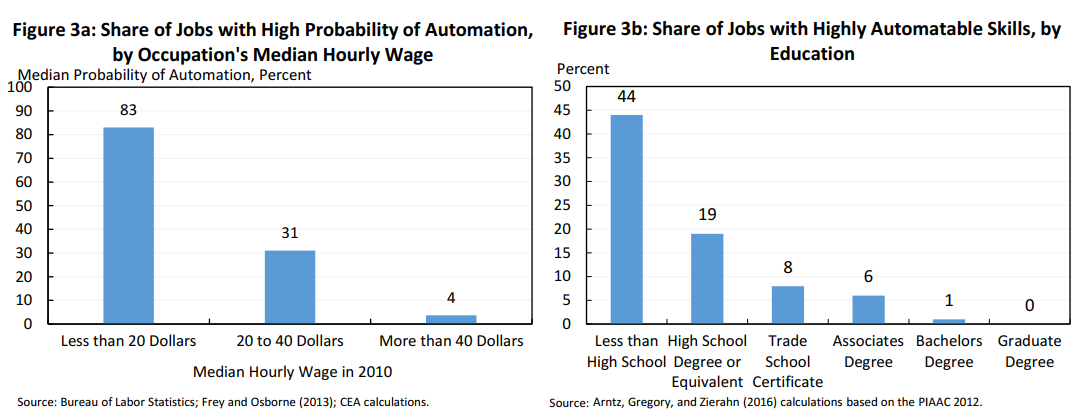The robots aren’t coming to take our jobs...at least not all of them. But a new report from the White House warns that unless the U.S. is smart about preparing for a future in which many, many more jobs are automated, the country runs the risk of a severely unequal distribution of the benefits from the increased efficiency that automation brings.
To a great degree, automation has already had a dramatic effect on the U.S. labor market. Political rhetoric aside, manufacturing output in the United States is at historic highs. But automation of many factory processes has made it possible to increase output with fewer workers.
Related: The Robot Revolution Could Wipe Out 5.1 Million Jobs by 2020
The report, a combined effort by the Council of Economic Advisers, the National Economic Council, the Domestic Policy Council, the Office of Science and Technology Policy, and the Chief Technology Officer, says that further automation is not only going to continue, but advances in artificial intelligence (AI) make it likely that it will accelerate in coming years.
“These transformations will open up new opportunities for individuals, the economy, and society, but they have the potential to disrupt the current livelihoods of millions of Americans,” the report finds.
Citing a recent CEA report, the authors note, “there is growing concern about a general reduction in competition among firms for workers and a commensurate shift in the balance of bargaining power toward employers. Market concentration resulting from the development of AI has the potential to worsen these trends. A displacement of workers from industries being disrupted by AI-driven automation would also create slack in the labor market in the short to medium-run, which is likely to depress wages.”
The report calls for a strong policy response to assure that workers are able to share in the economic growth that results from increased automation. That would include strengthening the social safety net and empowering labor unions in negotiations with employers. (Both steps that would be extremely difficult to achieve in the current political environment.)
Related: Robots Muscle in on the Gig Economy
Overall, the White House report advocates a three-pronged approach to preparing for a future remade by AI that includes aggressive investment in the very research and technology that is expected to disrupt the labor market.
“If care is taken to responsibly maximize its development, AI will make important, positive contributions to aggregate productivity growth, and advances in AI technology hold incredible potential to help the United States stay on the cutting edge of innovation,” the report finds. “Government has an important role to play in advancing the AI field by investing in research and development.

Alongside investment in research and development, the report suggests, the country should also prioritize education and training that prepares workers for a world in which simple tasks are increasing automated, making educational achievement vital to employment prospects. For example, the report estimates that more than 80 percent of jobs that currently paid an average of $20 or less per hour in 2010 are likely to be automated in the future.
“As AI changes the nature of work and the skills demanded by the labor market, American workers will need to be prepared with the education and training that can help them continue to succeed,” the report finds. Delivering this education and training will require significant investments.”
Related: Will the US Unleash an Army of Killer Robots? Ask Clinton or Trump
The report calls for funding of robust educational programs from childhood on, “so that all families can prepare their students for continued education, as well as investing in graduating all students from high school college- and career-ready, and ensuring that all Americans have access to affordable post-secondary education.”
Finally, the report recognizes that increasing automation will inevitably lead to disruption, particularly for low-skilled people already in the workforce. This will require, among other things, modernizing the social safety net, including unemployment insurance, Medicaid, Supplemental Nutrition Assistance Program (SNAP), and Temporary Assistance for Needy Families (TANF).
The authors of the report take a hopeful stance toward the ability of public policy to address the most disruptive effects of increasing automation.
“Technology is not destiny; economic incentives and public policy can play a significant role in shaping the direction and effects of technological change. Given appropriate attention and the right policy and institutional responses, advanced automation can be compatible with productivity, high levels of employment, and more broadly shared prosperity.”





